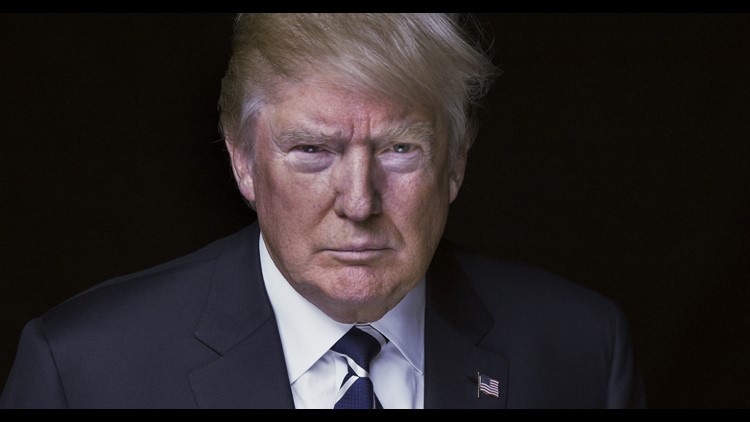President-elect Donald Trump’s transition team is engaged in active discussions with the US Army Corps of Engineers and Interior Department to begin planning a wall along the Mexican border, including how specific environmental laws could get in the way, CNN has learned.
A US official with knowledge of a visit last last month to the Interior Department — which oversees most federal lands and major environmental laws — said the transition team was particularly interested in finding out “how long it would take” to build the wall given potential legal obstacles.
“It seems clear they were trying to size up the environmental laws that may be obstacles to building the wall,” the source said.
Another US official told CNN the Trump transition team has also reached out to the Army Corps of Engineers’ Southwest Division, that has previously built border security fencing, to determine what previous fencing cost and how it was constructed. The team also asked Interior several questions, including how much wall would be needed, in an effort to determine a solid number of miles of wall necessary to secure the southern border.
The moves by the transition team, including previously reported questions to the Department of Homeland Security, show how seriously Trump is taking his promise to build a massive physical barrier between the US and Mexico. The idea energized backers at this rallies but was dismissed by opponents as expensive and unfeasible.
Trump was loud and clear in his first news conference since being elected that he wants to move quickly on the wall.
“It’s not a fence. It’s a wall,” Trump said Wednesday. “We’ll start immediately after we get to office; I don’t want to wait.”
Vice President-elect Mike Pence had started efforts to get clearances from Congress and agencies to begin construction of the wall, Trump said.
This outreach provides a window into how the Trump team — which did not respond to a request for comment on this story — is thinking about making the wall a reality.
The official told CNN it appeared transition officials were feeling out “what kind of regulatory barriers are in the way so they could possibly get rid of them.”
There are local, state and federal laws on the books that would protect endangered species and air and water quality. But one environmental law expert says what the Trump transition team could end up using language in the REAL ID Act that Congress passed in 2005. The law includes a provision that allows the secretary of Homeland Security the power to waive all local, state and federal laws that the secretary determines is an obstacle to building walls and roads along US borders.
The Sierra Club said the law allows DHS to waive more than 30 federal laws “in their entirety.” Some of those federal environmental laws include the National Environmental Policy Act, Endangered Species Act, Clean Water Act, National Historic Preservation Act, Migratory Bird Treaty Act, Clean Air Act and the Archaeological Resources Protection Act.
In 2008 Homeland Security Secretary Michael Chertoff invoked that power to waive environmental laws to construct barriers along portions of the southern border.
Melinda Taylor, an environmental law professor with the University of Texas, said the George W. Bush-era law is a powerful tool.
“The new administration has a wild card they can pull and it’s in this law,” Taylor said. “The language in this law allows them to waive all federal laws that would be an impediment to building any type of physical barrier along the border, including a wall.”
None of this addresses the projected multibillion-dollar cost of the wall. Congress would still have to approve funding to construct the wall, and Trump has promised he will get Mexico to eventually pay for the project. But removing some potential environmental legal fights could speed things up.
A third US official told CNN the Department of Homeland Security has been preparing for a scenario where they are told a wall along the southern border must be built.
“The moment Donald Trump won the election, DHS started discussions about how to achieve a wall if tasked to help make it happen. Those conversations included determining where to start erecting the wall first and identifying the priority areas along the border,” the source told CNN.
Taylor said if the new administration waives all federal laws that are intended to protect the environment and historic preservation “it will be particularly tragic.”
“If they really try to build a wall, without regard for environmental laws and without environmental impact statements, the effect of a border wall would be more catastrophic than a border fence,” she said.
A wall would prevent water from flowing across the Mexican border, and there is also wildlife that migrates across the border, including the endangered ocelot, also known as a dwarf leopard, located in south Texas and northern Mexico, she said.
“US Fish and Wildlife has spent a lot of money to preserve this animal and there are only a couple dozen left,” Taylor added.
Many other endangered species live along the border in California and Arizona as well. There is also the issue of Native American territory and private land that straddles the border as well as the historic preservation of potential archeological artifacts in the area.
Taylor is urging the new administration to do the impact studies so that “they have the data about the potential impact of a wall and find ways to minimize the impact.”



